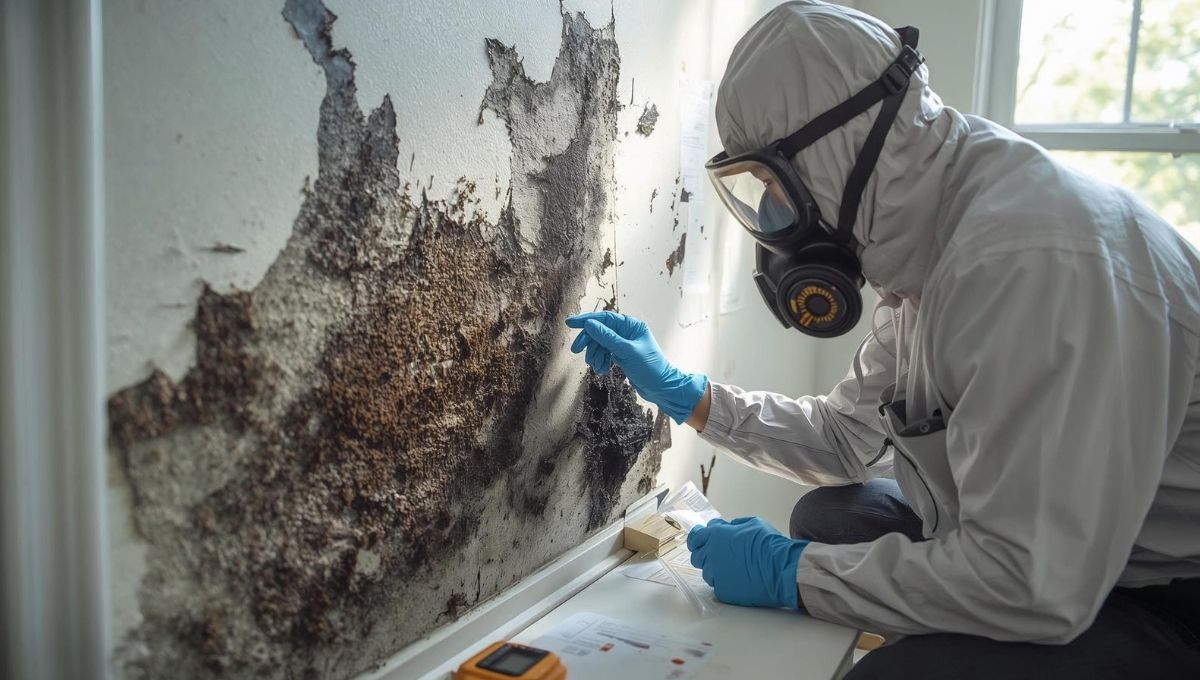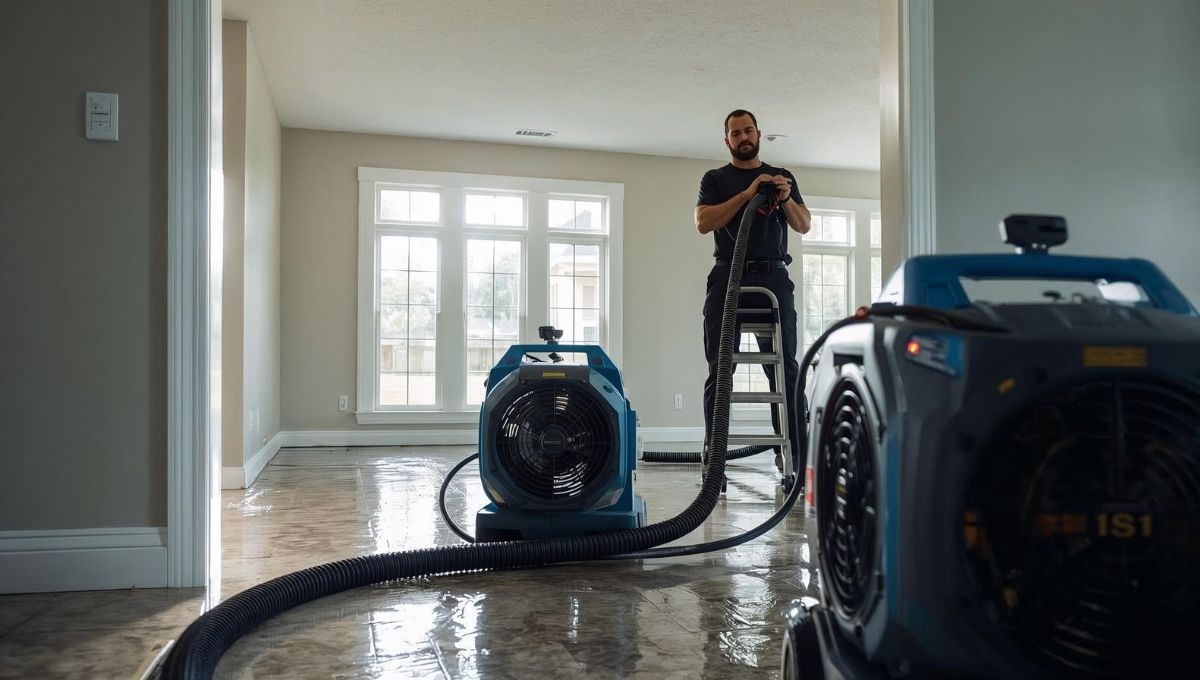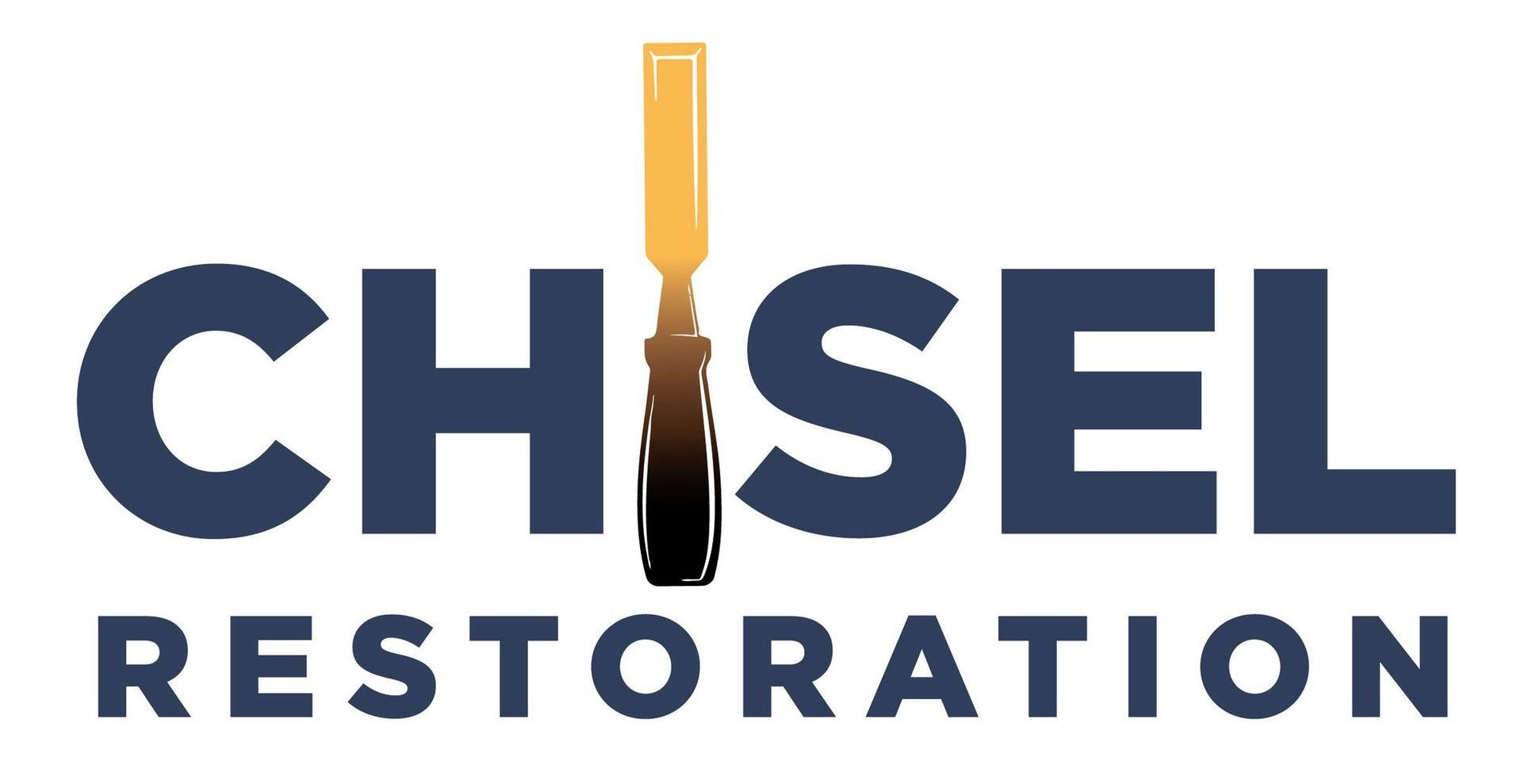How to Remove Mold from Walls
How to remove mold from walls is a common concern for many homeowners in Ocala, FL, especially in our humid climate where moisture and warmth create the perfect environment for mold growth. Mold can not only damage your home’s structure but also pose serious health risks for your family. The key to addressing mold problems effectively is to act quickly, clean safely, and ensure complete removal, including invisible spores that linger behind walls.
At Chisel Restoration, we specialize in comprehensive mold, water, hurricane, and storm damage mitigation. Our restoration professionals help you identify, remove, and prevent mold while protecting the safety and comfort of your home. With years of local experience and advanced technology, we ensure your property receives the highest-quality service every time.
Want a trusted local expert to inspect your walls for mold? Call Chisel Restoration today to schedule your professional mold assessment in Ocala.
1. Understanding Why Mold Grows on Walls
Mold thrives in moist, dark environments, and walls are one of its favorite hiding spots. Whether caused by water leaks, storm damage, or excess indoor humidity, mold can begin forming within 24 to 48 hours after moisture appears. Once spores settle into drywall, wood, or paint layers, they spread quickly and become difficult to remove without professional help. If left untreated, the problem can escalate from minor discoloration to significant structural damage.
Common Causes of Wall Mold
- Water leaks: Plumbing leaks or roof damage from storms create hidden damp areas inside walls.
- High humidity: Florida’s warm, humid air makes indoor spaces prone to condensation and moisture buildup.
- Poor ventilation: Bathrooms, kitchens, and laundry rooms often trap moisture if not properly ventilated.
- Flood or storm damage: After hurricanes or heavy rain, moisture can seep into drywall and flooring.
Health and Structural Risks
Mold exposure can trigger respiratory irritation, allergies, headaches, and asthma symptoms. Over time, mold can also weaken drywall, discolor paint, and compromise wood framing. If left untreated, it spreads to adjoining rooms and contaminates the air inside your home. A clean, dry wall today can prevent far more costly repairs tomorrow.
Why DIY Cleaning Often Fails
Many homeowners try to scrub visible mold with household cleaners or bleach, but mold spores can survive deep inside walls and behind paint. Bleach may remove stains but often fails to reach porous materials or airborne spores, leading to regrowth within days. Professional mold remediation ensures that both visible and hidden mold are removed completely, safely and permanently. Experts also identify underlying moisture sources so the problem doesn’t come back.
2. Safe Steps to Remove Mold from Walls
Before beginning mold removal, safety is the top priority. Disturbing mold without protection can release spores into the air, increasing exposure risk and spreading contamination throughout your home. A well-planned cleanup minimizes health hazards and ensures the mold won’t return once the area has been treated.
Step 1: Identify the Type and Extent of Mold
Start by inspecting the area carefully. Mold appears as black, green, or white patches, often with a musty odor. If you notice large affected areas or repeated regrowth, call a professional immediately — visible mold often indicates a much larger hidden problem inside your walls. Taking photos before cleaning can also help document the issue for insurance purposes.
Step 2: Contain the Area
To prevent spores from spreading, seal off the affected room with plastic sheeting and tape. Close air vents and doors, and turn off fans or HVAC systems during cleaning. This containment step keeps spores from migrating into other parts of your home, where they could cause secondary contamination or affect indoor air quality.
Step 3: Use Protective Equipment
Always wear gloves, safety goggles, and an N95 respirator mask. Long sleeves and pants help protect your skin from contact and spores. Using disposable protective gear can prevent cross-contamination once cleanup is complete.
Step 4: Clean Non-Porous Surfaces
Use mild detergent and warm water to scrub mold off hard, non-porous surfaces such as tile or metal. Avoid mixing cleaning chemicals, which can produce toxic fumes. After scrubbing, wipe surfaces with a clean, damp cloth and dry thoroughly.
Step 5: Discard Porous Materials
If drywall, insulation, or carpet padding is contaminated, these materials usually need to be replaced. Mold penetrates porous materials, making full removal nearly impossible without demolition and restoration. Removing these materials ensures a long-term solution rather than a temporary fix.
Step 6: Dry Thoroughly
Once cleaning is complete, dry the area completely using fans or dehumidifiers. Any remaining moisture can cause mold to return within days. Keep windows open if the weather permits to improve airflow and reduce humidity.
Step 7: Professional Remediation for Complete Removal
Certified mold specialists use advanced tools such as HEPA vacuums, negative air machines, and antimicrobial treatments to eliminate spores from the air and surfaces. Professional remediation goes beyond cleaning; it includes containment, air purification, and post-remediation testing to confirm that your home is safe. Professionals also verify that moisture levels remain stable to prevent future outbreaks.
3. Preventing Mold from Coming Back
Removing mold is only half the solution. Preventing its return means addressing the source of moisture and controlling indoor humidity long-term. By adopting simple preventive steps, you can keep your home dry and mold-free even during Florida’s stormy months.
Control Moisture and Humidity
- Fix plumbing or roof leaks immediately.
- Keep indoor humidity below 50% using a dehumidifier.
- Use exhaust fans in bathrooms, kitchens, and laundry rooms.
Check for condensation near windows or cold corners; these are common early warning signs of humidity problems.
Improve Air Circulation
Good airflow prevents condensation buildup. Open windows when possible and keep furniture a few inches away from walls to allow circulation. Running ceiling fans can help air move evenly through your home, reducing moisture that mold thrives on.
Maintain Your HVAC System
Your air conditioner helps regulate humidity. Replace filters regularly and schedule routine maintenance to ensure proper airflow and filtration. A well-maintained HVAC system is one of your strongest defenses against recurring mold issues.
Use Mold-Resistant Paint
After cleaning and drying walls, repaint with mold-resistant or mildew-resistant paint to add a protective layer. This simple upgrade can dramatically reduce future mold growth, especially in bathrooms, basements, and kitchens.
Schedule Regular Inspections
After water damage or storm events, schedule inspections to detect early signs of mold. Chisel Restoration provides professional moisture detection, structural drying, and remediation services designed for Florida’s climate. With our local expertise, you can enjoy long-lasting protection against recurring mold problems. Our technicians can even recommend preventive products to maintain optimal indoor air quality.
4. Why Choose Professional Mold Removal in Ocala, FL
Mold issues may seem small at first, but even minor growth can indicate deeper contamination inside walls or HVAC systems. Professional mold removal offers more than cleaning; it delivers safety, prevention, and peace of mind. Choosing a local expert ensures that your home receives care tailored to Florida’s unique weather conditions and humidity levels.
Local Expertise You Can Trust
Chisel Restoration is a trusted local business serving Ocala, FL, and surrounding communities. We understand the unique challenges Florida homeowners face, from high humidity to frequent storm damage. Our licensed and insured technicians provide expert mold, water, hurricane, and storm damage mitigation with rapid response times and proven results. We’re committed to restoring your property quickly, safely, and effectively.
Advanced Equipment and Techniques
Our team uses industry-standard containment systems, HEPA air scrubbers, and moisture-detection tools to ensure every spore is removed safely. We follow IICRC (Institute of Inspection Cleaning and Restoration Certification) guidelines for complete, professional remediation. These methods not only eliminate mold but also prevent future outbreaks, giving you confidence that your home is fully protected.
Protect Your Property and Health
Professional mold remediation protects your home’s structure, indoor air quality, and overall value. By addressing the source of moisture, our team helps you avoid recurring mold problems that could lead to costly repairs later. Our focus is on creating a clean, healthy environment for your family to breathe safely every day.
Fast, Reliable Service When You Need It
Whether you’ve discovered mold after a roof leak or hurricane, our technicians respond quickly to assess damage and begin restoration immediately. We work efficiently to return your home to a clean, safe condition, minimizing disruption and stress. Our 24/7 emergency service means help is always just a call away when you need it most.
Frequently Asked Questions
1. What kills mold permanently on walls?
Permanent mold removal requires eliminating both visible mold and airborne spores. Professional remediation combines antimicrobial cleaning, HEPA filtration, and moisture control to prevent regrowth. Household cleaners rarely achieve full eradication, especially in porous materials like drywall or wood.
2. Can I paint over mold?
No. Painting over mold may hide discoloration temporarily, but it traps moisture beneath the surface. This allows mold to spread unseen and eventually damage the paint and drywall. Always remove and treat mold before painting to ensure a lasting and healthy result.
3. How do I know if mold is behind my drywall?
You might notice musty odors, bubbling or cracking paint, or dark stains. Professionals use specialized tools such as infrared cameras and moisture meters to detect hidden mold inside walls without removing large sections of drywall unnecessarily. Early detection prevents widespread contamination.
4. What’s the difference between cleaning and remediation?
Cleaning focuses on visible mold; remediation removes spores from the air and surrounding materials, ensuring a safe environment. Remediation also addresses the cause of moisture to prevent future growth, offering long-term protection instead of temporary results.
5. How fast does mold grow after water damage?
In humid areas like Ocala, mold can start growing within 24 to 48 hours after water exposure. Quick response from professionals like Chisel Restoration can prevent extensive contamination and structural damage, saving you time, stress, and potential future repairs.
Don’t wait for mold to spread. Protect your home and your family with expert remediation. Contact Chisel Restoration today to schedule your professional mold inspection and cleanup service in Ocala, FL.



